Here are 15 animal fun facts that will amaze you and change the way you look at some animals. Listed below, are a lot of interesting things you probably didn’t know about some animals that will blow your mind. Prepare to be amazed!!!
Table of Contents
- 1. An octopus has three hearts, nine brains, and blue blood
- 2. Bats are the only flying mammals
- 3. Dog’s sense of smell is about 100, 000 times stronger than humans
- 4. Giraffes are the tallest land animal in the world
- 5. The Ostrich is the world’s largest and tallest bird.
- 6. Slugs have thousands of teeth with no nose but can smell
- 7. Zebra stripes act as a natural bug repellant
- 8. A Blue Whale weighs more than Twenty Elephants and is as long as three Greyhound buses
- 9. A snail can sleep for three years at a time
- 10. Cheetah is the fastest land animal on Earth
- 11. Lionesses hunt more than Lions
- 12. The fingerprints of a Koala are so indistinguishable from Humans
- 13. Slow Lorises are the only venomous Primates
- 14. The Horned Lizard can squirt blood from its Eyes
- 15. Frogs can freeze without dying
1. An octopus has three hearts, nine brains, and blue blood
Ever seen an octopus? This particular animal has some fun facts. An octopus has a rounded body with bulgy eyes and eight long arms. Each of these 8 arms has a mini-brain that allows them to act independently. Apart from these 8 brains, it still has one central brain. Hence, it has a total of nine brains. Isn’t that cool?
Not only is the number of brains exciting, but the central brain which is wrapped around the esophagus and located in the head is donut-shaped. The common octopus (Octopus Vulgaris) has about 500 million neurons. Which about two-thirds are located in its arms, while the rest are in the central brain.
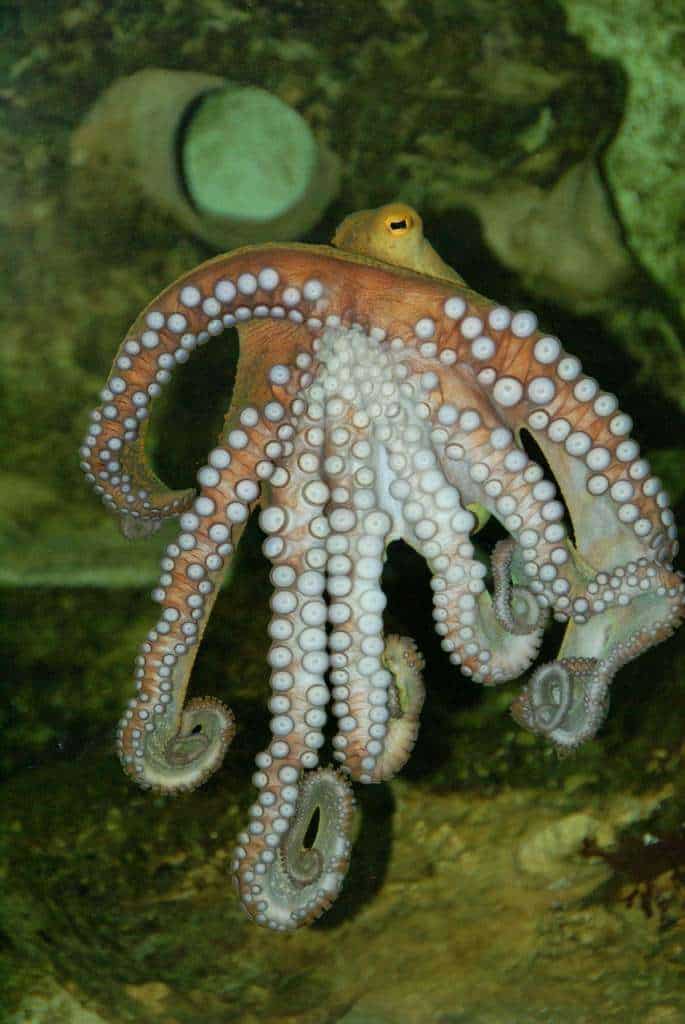
Another fun amazing fact is Octopuses have 3 hearts. The larger one circulates blood to the rest of the body. Whereas the other two hearts pump blood to the gills. The reason for this impressive number of hearts probably comes down to the unusual composition of their blood.
The blood of an octopus is unusual. Unlike vertebrates that have iron-rich hemoglobin packed into red blood cells, octopuses have copper-rich protein (hemocyanin) dissolved directly in their blood. Due to this rare nature, their blood is blue in color. Haemocyanin is actually a less efficient oxygen transporter than hemoglobin. However, the three hearts octopus possess helps to compensate for the less efficiency of hemocyanin to transport oxygen in the body. The hearts help by pumping blood at higher pressure around the body to enable the octopus to stay alive and healthy.
2. Bats are the only flying mammals
Bats are the only mammals capable of true and sustained flight. The scientific name for bats is Chiroptera, which means “hand wing” in Greek. They are mammals but their forelimbs are adapted as wings. Bats have four long fingers and a thumb, each connected to the next by a thin layer of skin. The only mammal in the world that can fly happens to be Bats. Some schools of thought will, however, argue that flying squirrels are also flying mammals. Although flying squirrels can glide from tree to tree. They can’t fly as high as bats.
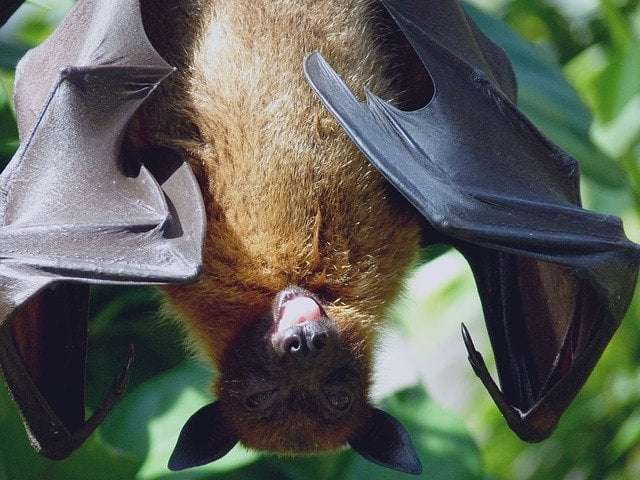
Bats’ flexible joints, make them more maneuverable and more skillfully agile than gliding mammals. The finger bones of bats are much more flexible than other mammals. This is attributed to their flattened cross-section and low levels of calcium near their tips. They have flexible skin membrane and movable joints which allows them to change direction quickly and catch some insects around them in mid-air.
They may be small, but they’re fast little creatures. According to recent research, they can reach speeds over 100 miles per hour and for easy flight, they digest their food extremely fast. They sometimes excrete within 30- 60 minutes, after eating. This kind of metabolism helps them to keep their weight low for easy flight.
3. Dog’s sense of smell is about 100, 000 times stronger than humans
Is a Dog’s nose powerful? Can a dog smell better than you? The answer is YES! A dog’s sense of smell is definitely one of the animal fun facts to look into. It will interest you to know that for every scent receptor a human has, a dog has about 50. The main reason a dog has a better sense of smell than us is its number of scent receptors. They have up to 300 million olfactory receptors in their noses.
You definitely can’t compare that to the estimated six million olfactory receptors in us. Also, the part of the dog’s brain that is specialized in analyzing smells is about 40 times greater than ours. They gather a huge amount of information about their environment, people, and other animals through scent.
You should also know that their noses also function differently from human’s own. Dogs have a much larger area of nasal membrane than humans. We can’t wiggle our nostrils independently but Dogs can. When humans inhale, we smell and breathe through the same airways within our noses and when we exhale, we send the air out the way it came in, hindering any incoming odor.
But, when dogs inhale, a fold of tissue inside their nostril helps to separate these two functions of smelling and breathing. However, when they exhale, the air goes out through the slits in the sides of their noses. The air swirl out in a manner that actually helps usher in new odors into their noses. This allows dogs to sniff continuously as they are attracted to new and interesting odors.

Also, the so-called aerodynamic reach of each of their nostrils is smaller than the distance between the nostrils, which aids them to determine which nostril an odor comes in from. This however helps them in locating the source of the smell. This is why you must have seen dogs trying to locate an interesting scent, as they twist and move back and forth across its invisible trail.
With training, dogs can and are being used to sniff out bombs and drugs, pursue suspects, track missing persons, find dead bodies, and trace toxic substances, such as gases, that humans cannot detect. Due to their powerful sense of smell, they’re being used experimentally to detect human diseases, such as cancer, diabetes, tuberculosis, and now, malaria. They possess a sense of smell, that in most cases is even more sensitive, than the most advanced man-made instrument. Their sense of smell is very powerful enough to detect substances at a concentration of one part per trillion ( that is like sniffing out a single drop of perfume in 20 Olympic-size swimming pools put together). Quite impressive and Incredible!
Nevertheless, not all dogs’ noses are the same. Some dog breeds, such as the German shepherd and the bloodhound, have much more intense and developed olfactory senses than others.
4. Giraffes are the tallest land animal in the world
Giraffes can’t be left out in our list of animal fun facts. They have been found to be the tallest land animal. They are the tallest living terrestrial animal in the world, reaching 16–20 ft tall. According to National Geography, the average giraffe stands 14 to 19 feet (4.3 to 5.8 meters) tall.

Males can grow up to 18 feet (5.5 meters) tall, while females can reach 14 feet (4.3 meters) tall. Their calves (giraffes’ babies) are born 6 feet (1.8 meters) tall and can grow up to an inch per day. Giraffes can weigh an estimate of 1,750 – 3,500 pounds, depending on their sex.
We all know giraffes for their long necks. Their neck makes up almost half of their height. A giraffe’s neck can grow up to 6-7 feet. Giraffes use their height to reach leaves at the top of trees with the help of their massive 21-inch tongue. Their legs alone are taller than most adult humans.
5. The Ostrich is the world’s largest and tallest bird.
An ostrich definitely comes into our animal fun facts. Ostriches are known for their long neck and large body. It is seen as the heaviest and tallest bird on earth. They can grow up to 9 feet (2.7m) tall. A Female ostrich can grow up to six feet and weigh more than 200 pounds, whereas the males can reach 9 feet tall and weigh about 280 pounds. Ostriches also have the largest eggs in the world. A single ostrich egg can weigh as much as two dozen chicken eggs ( roughly more than 3 pounds).
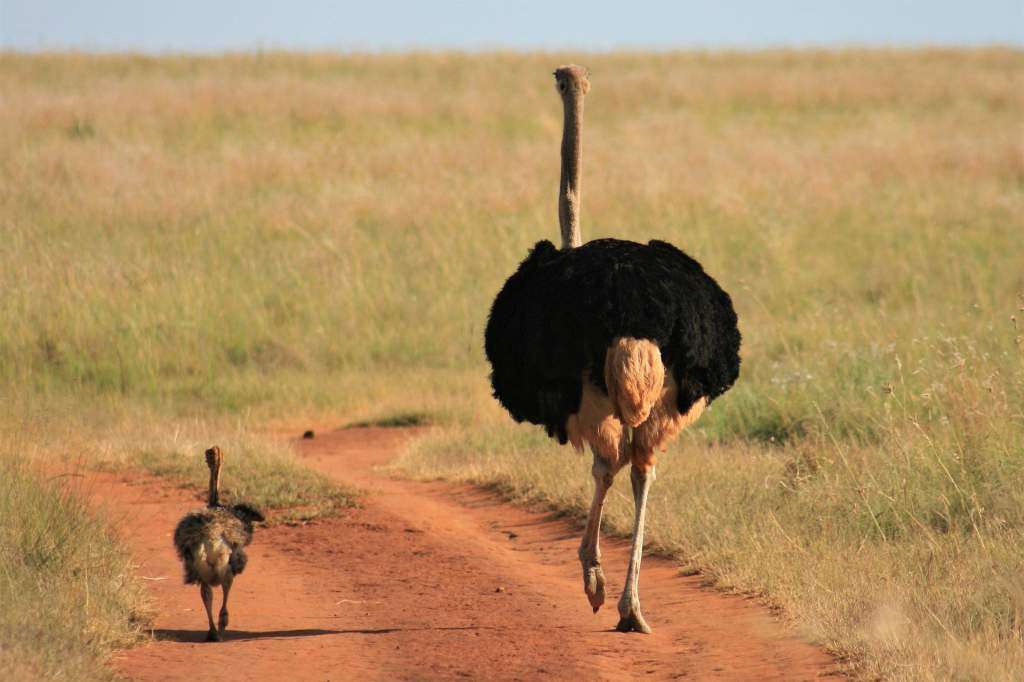
However, due to their height and weight, they are flightless. Rather, they have two powerful legs adapted for speed. An ostrich relies on its strong legs which are two-toed. The main toe looks almost like a hoof and it uses it to escape its enemies. Its enemies are larger carnivores animals and humans. Regardless of their weight, they can sprint up to 43 miles an hour, making them the fastest running creature on two legs. Therefore Ostriches are strong runners, even though they cannot fly.
6. Slugs have thousands of teeth with no nose but can smell
Slugs have evolved to eat everything. They are Omnivorous and detritivorous (eating decaying waste from plants and other animals). Slugs eat with a jaw and a flexible band of teeth. They have thousands of teeth. Their teeth are microscopic and are known as the radula (plural is radulae). The radula scrapes the food particles as the jaw cuts off larger pieces of food, to be grated by the radula. This feature has given the slug a spot on our list of animal fun facts.
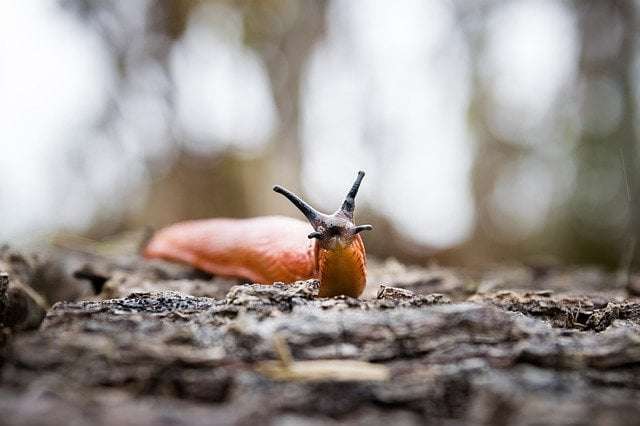
A slug does not have a nose like most animals and humans, but they can smell. Unlike other animals, that the nose functions as both a ‘breathing tube’ and a sensory organ. Slugs don’t have a traditional nose. Rather, they possess four (two pairs) tentacles. These tentacles are retractable. and operate independently. It uses one pair of tentacles for touching and tasting. The other pair of tentacles contain the eyeballs on the tips, and it uses them for seeing and smelling.
7. Zebra stripes act as a natural bug repellant
The Zebra animal has a spot in today’s animal fun facts too. The Zebra’s black and white stripes use to be seen as camouflage in tall grasses to escape predators. However, a recent study says the zebra pattern seems to be an evolved mechanism against blood-sucking horseflies. The stinging, disease-spreading bite of a blood-sucking horsefly may be the key to the mystery surrounding how zebras got their stripes.
The female Horseflies, which feed on blood, are attracted to light waves that are intense. This sort of glare lures them most likely because it resembles light reflected off water, where they lay their eggs.

Findings of a new European study suggest that zebras evolved their unique stripes because the narrow black and white vertical stripes are not attractive to horseflies, which are found across Africa. However, after several experiments and research, many researchers are of the opinion that zebra coats, with their mixtures of light and dark stripes, would be less attractive to flies than those of black horses, but more than those of white horses. Hence, the zebra stripes are said to serve as a natural bug repellant.
8. A Blue Whale weighs more than Twenty Elephants and is as long as three Greyhound buses
Blue whales are the largest animals that have ever lived. They’re even bigger than elephants and dinosaurs. Blue whales can reach about 34 meters (110 feet) long and weigh as much as 172,365 kilograms (190 tons). Which is estimated as thrice as long as a city bus. They are gigantic. The average weight for these gentle giants is 200,000 to 300,000 pounds (90,000 to 136,000 kilograms), or about 100 to 150 tons.

Some can weigh about 220 tons. They have the largest heart in the animal kingdom, which weighs about 400 pounds (180kg). Isn’t it awesome that only a blue whale’s heart weighs more than most of us? As a blue whale dives to feed, its gigantic heart may only beat twice per minute.
Elephants are known to be the largest land animal but the blue whale outweighs them. For comparison, an adult African bush elephant weighs up to 6 tons, so it may take 30 or more elephants to equal the weight of one blue whale. A blue whale’s tongue alone can weigh as much as some elephants.
Even at birth, blue whales are larger than most other adult animal species. Their calves are the biggest babies on Earth. They pop out at around 8,800 pounds (4,000 kg) with a length of some 26 feet (8 meters). Their growth rate is likely one of the fastest in the animal world. They gain 200 pounds (90 kg) a day.
9. A snail can sleep for three years at a time
Snails can sleep for up to three years. No! it’s not an exaggeration. This sleeping beauty attribute is indeed one of our amazing animal fun facts.
Snails actually need moisture to survive. So if the weather is not favorable, they can actually sleep up to three years. Snails can go into hibernation (which occurs in the winter), or estivation (also known as ‘summer sleep’), helping to escape warm climates.

During this period, they will secrete mucus over their bodies to protect themselves from the dry, hot weather. They only sleep this long when the weather is not favorable. As soon as the weather is just right, snails do tend to follow a pretty regular sleeping schedule.
10. Cheetah is the fastest land animal on Earth
Cheetahs are the world’s fastest land animals. It can reach speeds of up to 75 mph (120 kph). They are mistaken most times for leopards because of their spotted skin. They are built for speed and hunting.

Cheetahs are capable of going from 0 to 60 miles per hour in less than three seconds. They are also known for their long legs and graceful bodies. They are known to be solitary animals. After 6 weeks, cheetah cubs begin to follow their mother when she hunts and learns how to catch and kill antelope and other small mammals.
The cheetah has a unique, flexible spine, which allows for extreme flexion and extension while running at top speeds. In spine flexion, when the cheetah’s legs are directly underneath its body, the scapula and hip are able to rotate to such an extreme angle that its front and hind legs overlap.
11. Lionesses hunt more than Lions
In as much as there is this narrative that it’s the male lions that do the hunting. Studies have proven that the Lionesses hunts around 90% of the time, while the male lion protects their pride.
Male lions are viewed as this majestic creature that is a protector, a father, and a warrior. The one that will put his life on the line for his pride, his females, and his cubs. They will sacrifice anything for the greater good of their land and the lions upon that land.
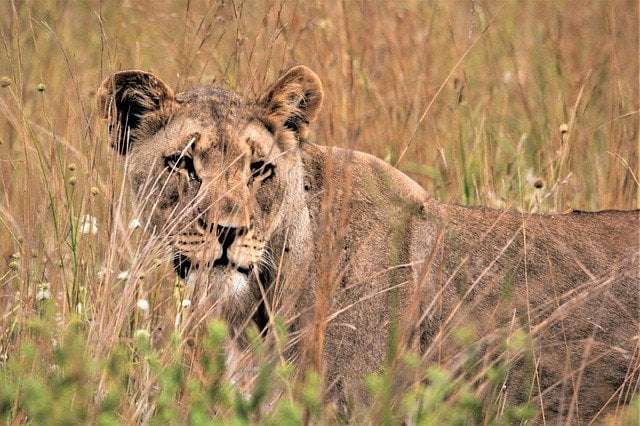
Bestowed with such an important role as the leader and the defender of the pride. The male lion is omitted from the hunting duties, as this is left to the lionesses. The Lioness as a beautiful tawny-colored cat blends perfectly with her surroundings. She will hunt and kill prey to provide for the pride and the males too that are dominant over that pride.
12. The fingerprints of a Koala are so indistinguishable from Humans
Our Animal fun facts just got more interesting. Do you know a Koala bear can tamper with a crime scene just by being there?
You probably didn’t know that their fingerprints have on various occasions been confused for a human’s own. Koalas have fingerprints that are almost identical to human’s own. Even a careful analysis under a microscope can not easily distinguish the loopy, whirling ridges on koalas’ fingers from our own.
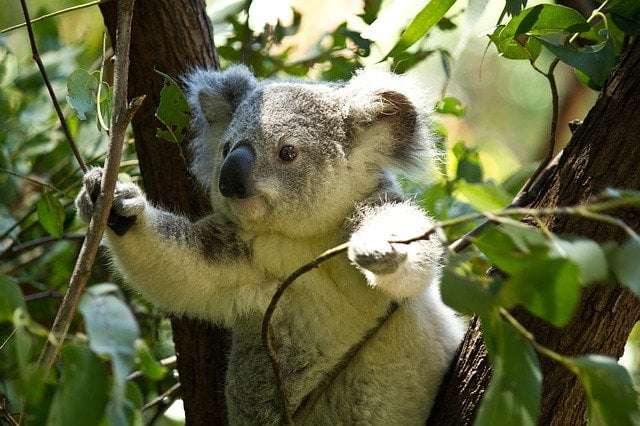
What is even more astonishing is the fact that the loops, the whirls, and the patterns are completely unique to each individual koala. The reason why they have such prints is still a bit of a mystery to scientists. Because most tree-dwelling mammals don’t have such features, but surprisingly koalas do.
Koalas, however, aren’t the only animals with fingerprints. Some close human relatives such as gorillas and chimpanzees have fingerprints as well. The remarkable thing about koala prints is that they seem to have evolved independently. Scientists are of the opinion that the koala’s fingerprint features developed much more recently in its evolutionary history. This is assumed because most of its close relatives (such as wombats and kangaroos) lack them.
13. Slow Lorises are the only venomous Primates
Slow lorises may look adorable with their large dreamy eyes, button noses, and plump fuzzy bodies, but their bite can be deadly. They have a flesh rotting venom and are one of the world’s venomous mammals. The fun fact about this animal is that they have a toxic bite, a trait rare among mammals and unique among the primates.
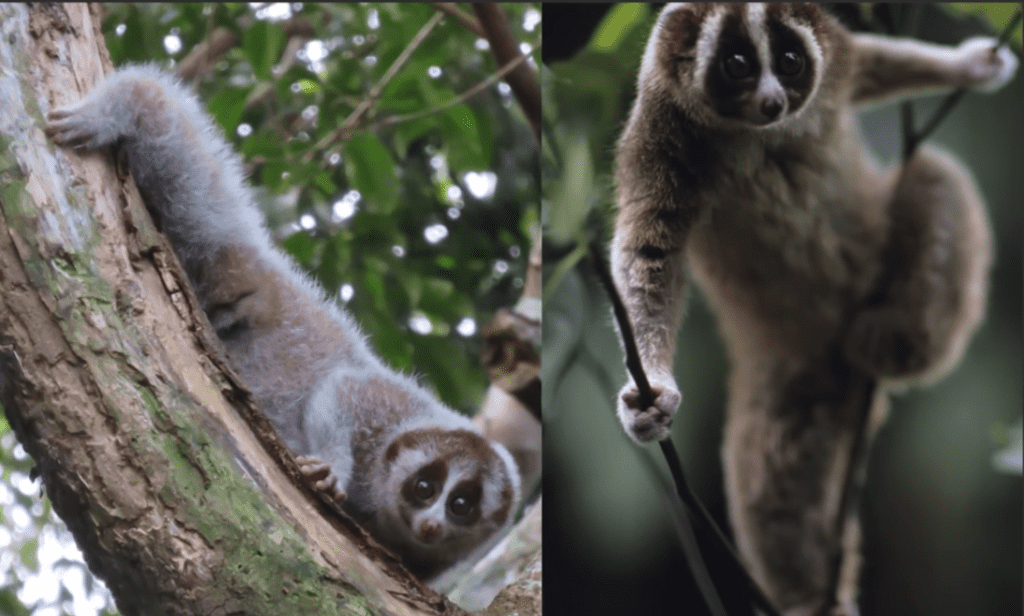
Many still wonder the primary purpose of slow loris’ venom. Capturing prey was ruled out because their primary food is tree gum. Hence the leading hypotheses for the essence of its venom are either defense against predators or parasites. But what is even rare is, they use their venom on one another.
They possess a dual composite venom consisting of saliva and brachial gland exudate, a malodourous fluid forming from an apocrine sweat gland on the animal’s forearm. Both fluids have been demonstrated as being venomous individually and creating a more potent venom when mixed. The brachial gland exudate (BGE) has several ecological functions including anti-parasitic defense and communication. Slow loris saliva has been shown to be cytotoxic to human skin cells in laboratory experiments without the admix of BGE.
14. The Horned Lizard can squirt blood from its Eyes
The horned lizard is capable of squirting blood from its own eyes, up to a distance of 3-4 feet away. This rather bizarre and disgusting act is a defensive mechanism to confuse predators.

The horned lizard has two constricting muscles that line the major veins around its eye. When these muscles contract, they cut off blood flow back to the heart, while it continues to flow into the head. This floods the ocular sinuses with blood, building pressure, and causing them to bulge. When these muscles contract further, the pressure increases even more, eventually rupturing the thin sinus membranes. This then results in a jet stream of blood that can shoot up to four feet from the eye socket. This process is known as auto-hemorrhaging.
Once a horned lizard feels threatened by a predator, its final defense response is to squirt blood from its eye sockets. As a result, the predator is often frightened and flees. The lizard also uses this mechanism to remove foreign particles from the surface of its eyes.
It’s intriguing to know that when necessary they can actually repeat this process several times within a short period. Even though the mechanism for the rapid recovery in this process is not completely understood. and is still being studied. This mechanism is one of the most intriguing of all the animal fun facts shared in this piece.
15. Frogs can freeze without dying
Ever wondered what happens to frogs during winter? You may be wondering how they escape the ice. The fact is if they can’t dig down far enough into the soil to avoid the ice or aren’t lucky enough to live in warmer climates, they actually freeze. YES, they FREEZE.
Fortunately for them, they don’t freeze to death. Many survive to mate another spring. In the fall, these frogs bury themselves under the leaves on the forest floor but not deep enough to escape the ice.
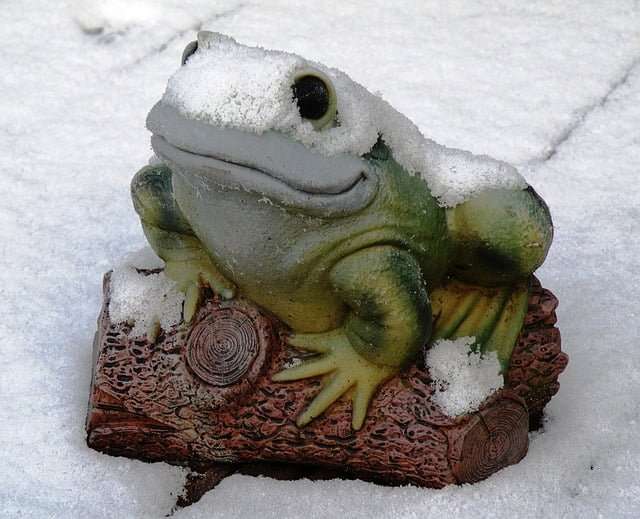
There are a number of creatures that possess some level of freeze tolerance. The Wood frog ( Rana sylvatica) is one of them. Frogs are cold-blooded ( and precisely ectothermic), so their body temperature closely monitors the atmospheric temperature around them. Temperatures have to be slightly below 32 degrees Fahrenheit to freeze a frog. The ice begins to grow when an ice crystal touches the frog’s skin. It can survive for weeks with two-thirds of its body water completely frozen to the essence that it is solid frogsicles.
What is even more fascinating is the fact that the wood frogs stop breathing and their hearts stop beating entirely for days to weeks at a time. In fact, during its period of frozen winter hibernation, the frogs’ physical processes (metabolic activity to waste production) come to a near halt.